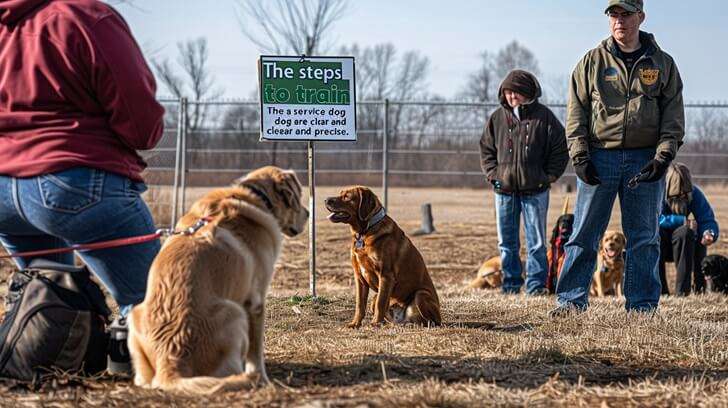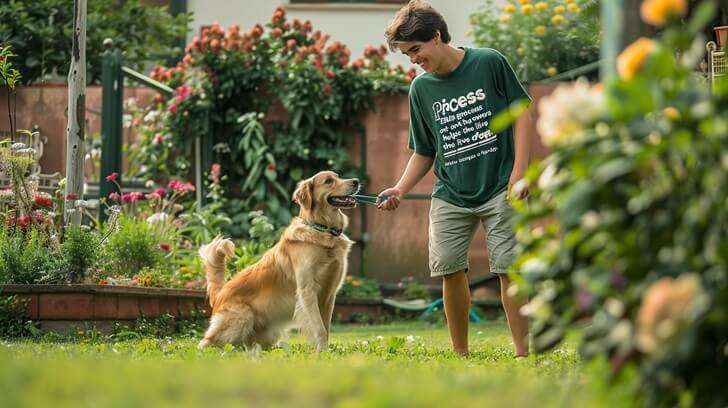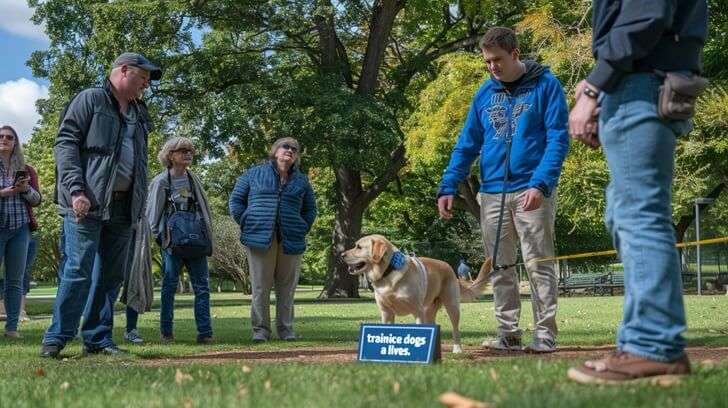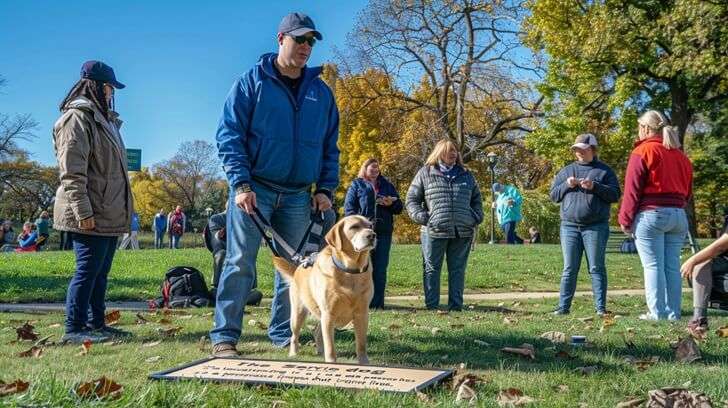
Service dogs play a crucial role in enhancing the quality of life for individuals with disabilities. These specially trained canines provide invaluable assistance, offering not only physical support but also emotional companionship. In recent years, the significance of service dog training has gained widespread recognition. Training a dog for service work is a meticulous process that ensures these animals can perform specific tasks tailored to their handler’s unique needs. Understanding what goes into this training and its profound impact on the lives of people with disabilities is essential for anyone considering this path.
In this article, we will explore the intricate process of service dog training, the numerous benefits these dogs offer, and practical advice for those interested in this rewarding endeavor. We will also examine common challenges faced during the training process, provide scientific backing for the benefits of service dogs, and conclude with actionable steps for readers who wish to pursue service dog training or consider acquiring a service dog. Whether you’re a potential service dog handler, a trainer, or simply curious about the topic, this comprehensive guide will provide valuable insights and practical tips.
Benefits of Service Dog Training

Service dog training offers numerous advantages, not only for the dogs themselves but also for their handlers. Here are five key benefits:
1. Enhanced Independence
Service dogs empower individuals with disabilities to regain their independence. For those with mobility impairments, a service dog can assist with daily tasks such as retrieving dropped items, opening doors, and providing balance support. This newfound independence allows handlers to engage more actively in their communities and enjoy life with less reliance on others. The ability to perform daily activities without assistance can greatly improve a person’s confidence and self-esteem, fostering a sense of control over their life.
2. Improved Mental Health
The companionship provided by service dogs has a significant positive impact on mental health. Research indicates that having a service dog can reduce symptoms of anxiety and depression. The bond formed between a service dog and its handler fosters a sense of security and emotional stability. The presence of a trained canine companion can be particularly beneficial for individuals with PTSD, as it offers comfort during stressful situations. Studies have shown that interactions with dogs can trigger the release of oxytocin, a hormone associated with bonding and emotional support, further enhancing the mental well-being of individuals with disabilities.
3. Social Interaction and Integration

Service dogs serve as social facilitators, helping their handlers connect with others. The presence of a service dog often attracts attention and sparks conversations, making it easier for handlers to engage with the community. This increased social interaction can combat feelings of isolation and enhance the overall quality of life for individuals with disabilities. Furthermore, service dogs can help break down barriers and stereotypes surrounding disabilities, fostering understanding and empathy among the general public.
4. Task-Specific Assistance
One of the primary functions of service dogs is to perform specific tasks that directly assist their handlers. For example, service dogs can be trained to alert individuals with hearing impairments to important sounds or provide support for those with seizure disorders. This tailored assistance is crucial for enhancing the safety and well-being of their handlers. The ability of service dogs to perform these tasks not only improves the quality of life for their handlers but also reduces the burden on family members and caregivers.
5. Increased Physical Activity
Owning a service dog encourages a more active lifestyle. Regular walks and playtime contribute to the physical well-being of both the handler and the dog. This increased physical activity is beneficial for individuals with disabilities, promoting a healthier lifestyle and reducing the risk of secondary health issues associated with a sedentary lifestyle. Engaging in physical activities with a service dog can also provide opportunities for social interaction, as handlers may meet others in their community during walks or outings.
A Step-by-Step Guide to Service Dog Training

Training a service dog is a comprehensive process that requires time, patience, and dedication. Here’s a step-by-step guide to help you understand the training process:
Step 1: Choosing the Right Breed
Not all dogs are suitable for service work. Selecting the right breed is crucial, as some breeds are naturally more inclined to perform service tasks. Breeds such as Labrador Retrievers, Golden Retrievers, and German Shepherds are popular choices due to their intelligence, trainability, and temperament. When choosing a dog, consider the specific needs of the handler and the tasks the dog will need to perform.
Step 2: Basic Obedience Training

Before beginning service-specific training, it’s essential to establish a solid foundation of basic obedience commands. Teach commands such as sit, stay, come, and heel. This foundation is vital for ensuring the dog understands basic commands and can focus on more complex tasks later. Consistent training sessions and positive reinforcement techniques will help solidify these commands.
Step 3: Socialization
Socializing the service dog is crucial for preparing them to navigate various environments and situations. Expose the dog to different people, places, and sounds to help them become comfortable and well-adjusted. A well-socialized service dog will be more effective in public settings. Take the dog to parks, shopping centers, and other busy areas to expose them to various stimuli and social interactions.
Step 4: Service-Specific Training

Once basic obedience and socialization are established, it’s time to move on to service-specific tasks. This training should be tailored to the handler’s needs. For example, if the handler has a mobility impairment, the dog may be trained to retrieve items or provide support during walking. If the handler has a hearing impairment, the dog can be taught to alert them to important sounds, such as doorbells or alarms.
Step 5: Public Access Training
Service dogs must be trained to behave appropriately in public settings. This includes ignoring distractions, remaining calm in crowds, and focusing on their handler. Public access training is essential to ensure that the service dog can function effectively in various environments. Practice in different settings, such as busy streets, restaurants, and public transportation, to prepare the dog for real-life situations.
Step 6: Ongoing Training and Reinforcement
Training does not end once the dog has completed service-specific training. Ongoing reinforcement and practice are necessary to maintain the dog’s skills. Regular training sessions help reinforce commands and ensure the dog remains proficient in their tasks. Incorporate new challenges and distractions to keep the dog engaged and adaptable.
Common Mistakes and Challenges to Avoid

While training a service dog can be a rewarding experience, there are common mistakes and challenges to be aware of:
1. Inconsistent Training
One of the most common pitfalls is inconsistent training. It’s vital to establish a regular training schedule and stick to it. Inconsistency can confuse the dog and hinder their progress. Set aside dedicated time for training each day, and ensure that all family members are on the same page regarding commands and expectations.
2. Neglecting Socialization
Failing to adequately socialize the dog can lead to behavioral issues in public. Ensuring the dog is comfortable in various environments is crucial for their success as a service animal. Make socialization a priority, and seek opportunities for the dog to interact with other people and animals.
3. Overlooking Basic Obedience
Skipping basic obedience training can be detrimental to the overall training process. A solid foundation of obedience is essential for successful service-specific training. Ensure that the dog masters basic commands before introducing more complex tasks.
4. Expecting Too Much Too Soon
Training a service dog takes time and patience. Expecting immediate results can lead to frustration for both the handler and the dog. It’s important to celebrate small victories along the way and recognize that progress may be gradual.
5. Ignoring the Handler’s Needs
The training process should be tailored to the specific needs of the handler. Failing to consider the handler’s unique requirements can result in a service dog that is not fully equipped to provide the necessary support. Regularly assess the handler’s evolving needs and adjust training accordingly.
Scientific Backing and Data

Numerous studies highlight the significant benefits of service dogs for individuals with disabilities. According to a study published in the Journal of Psychiatric Research, service dogs were shown to reduce anxiety and improve overall quality of life for individuals with PTSD. Another research project conducted by the American Psychological Association indicated that the presence of a service dog could alleviate depressive symptoms and foster a sense of companionship.
Additionally, a report from the National Service Animal Registry highlights that service dogs can perform tasks that directly mitigate disabilities, such as guiding individuals with visual impairments or alerting those with hearing loss. These findings underscore the profound impact that service dog training has on improving the lives of people with disabilities.
Moreover, a study published in the International Journal of Environmental Research and Public Health concluded that service dogs significantly improve the quality of life for individuals with disabilities, providing emotional support and enhancing overall well-being. The report emphasized the importance of properly trained service dogs in fostering independence and social integration.
Conclusion with Call to Action
Service dog training is a life-changing endeavor that benefits not only the dogs but also the individuals they assist. The journey from selecting the right breed to mastering specific tasks is filled with challenges and rewards. By understanding the importance of service dog training and its numerous benefits, potential handlers can make informed decisions about incorporating a service dog into their lives.
If you’re considering training a service dog or seeking a service dog, take the first step today. Research reputable training programs, connect with professionals, and explore the transformative power of a service dog. Additionally, for those interested in expanding their knowledge of dog training, consider purchasing the Dog Trainer Bible. This comprehensive guide is an invaluable resource for anyone looking to deepen their understanding of dog training techniques and best practices. Your journey toward enhanced independence and improved quality of life begins now.
